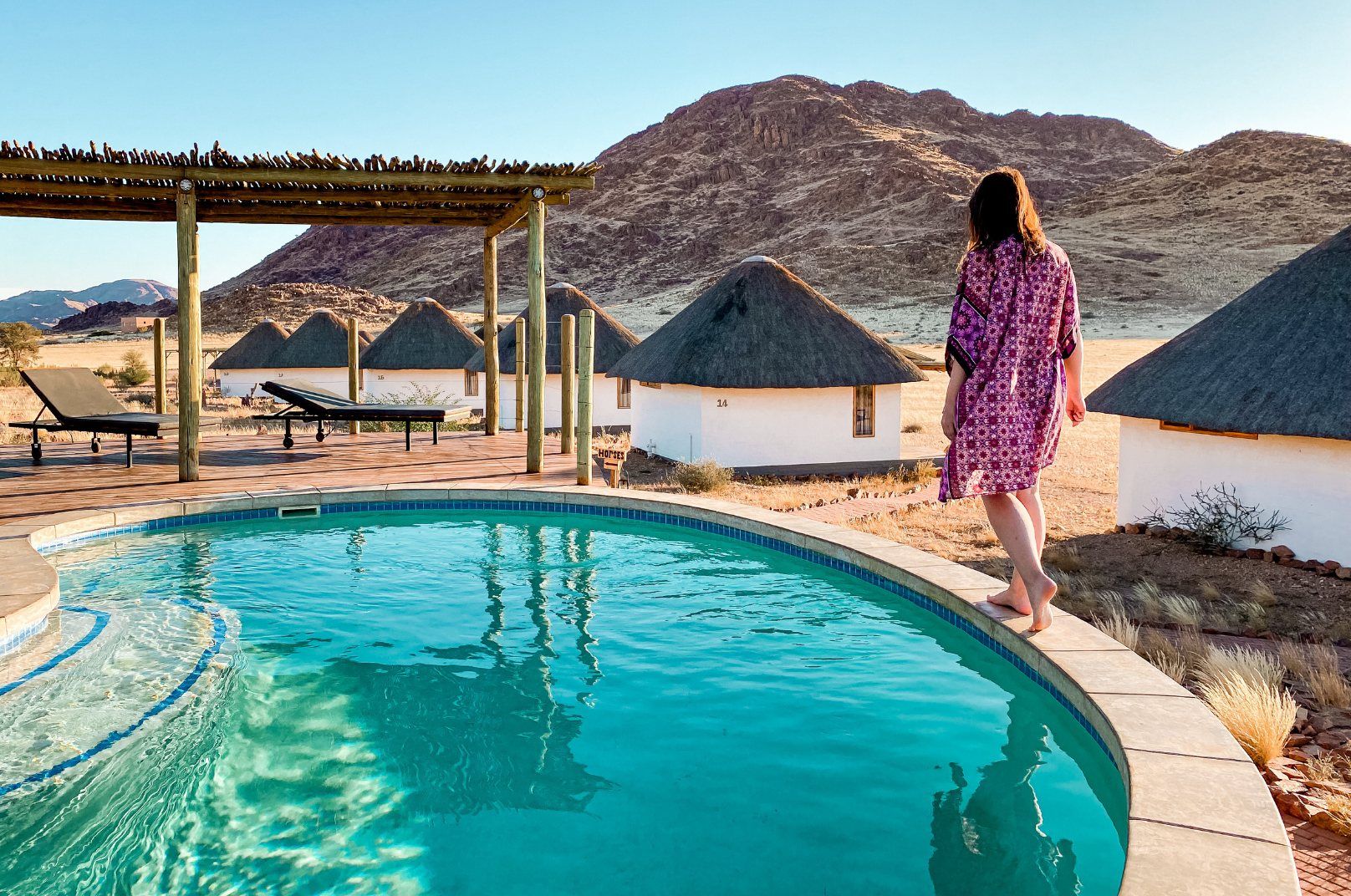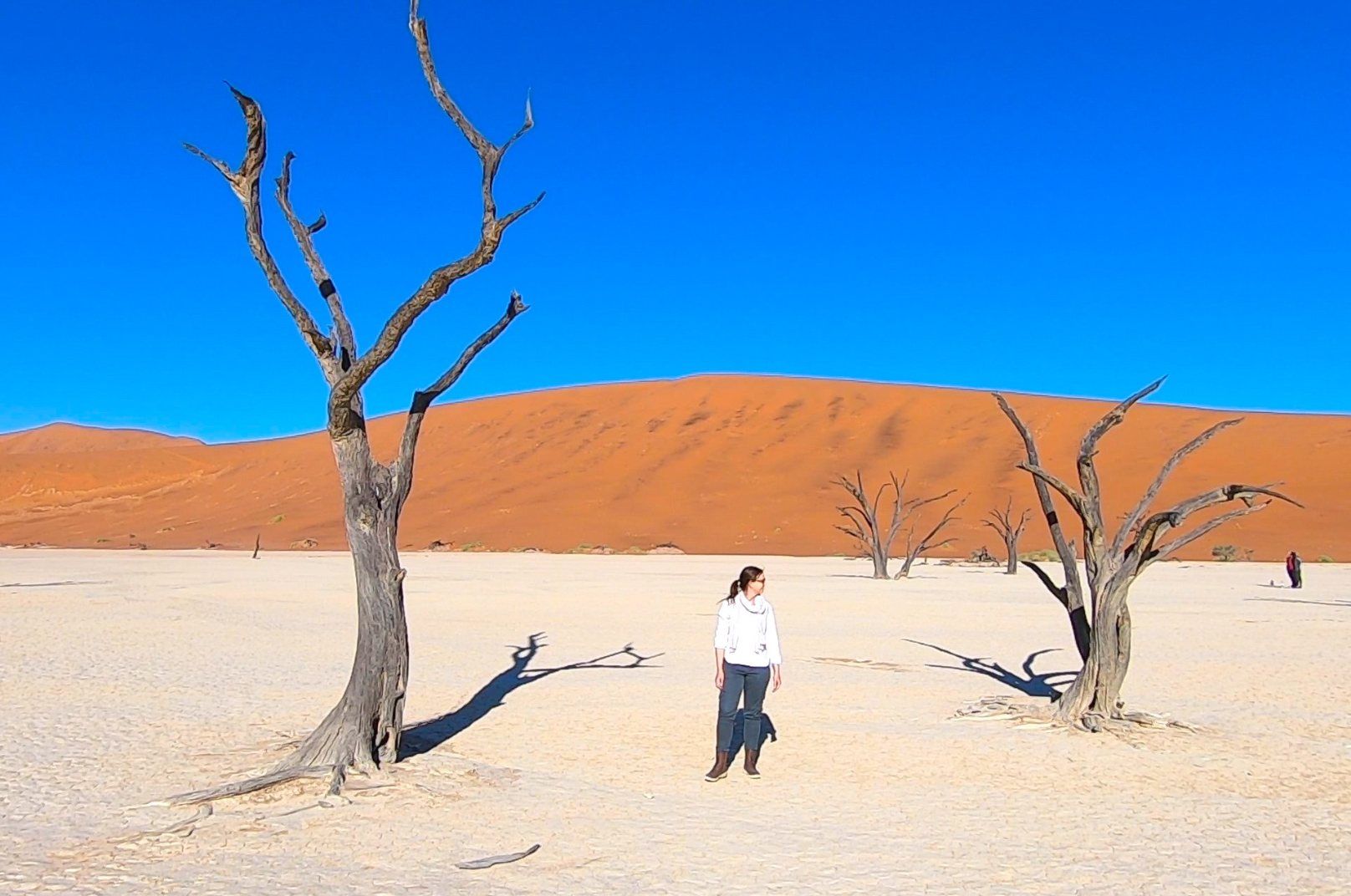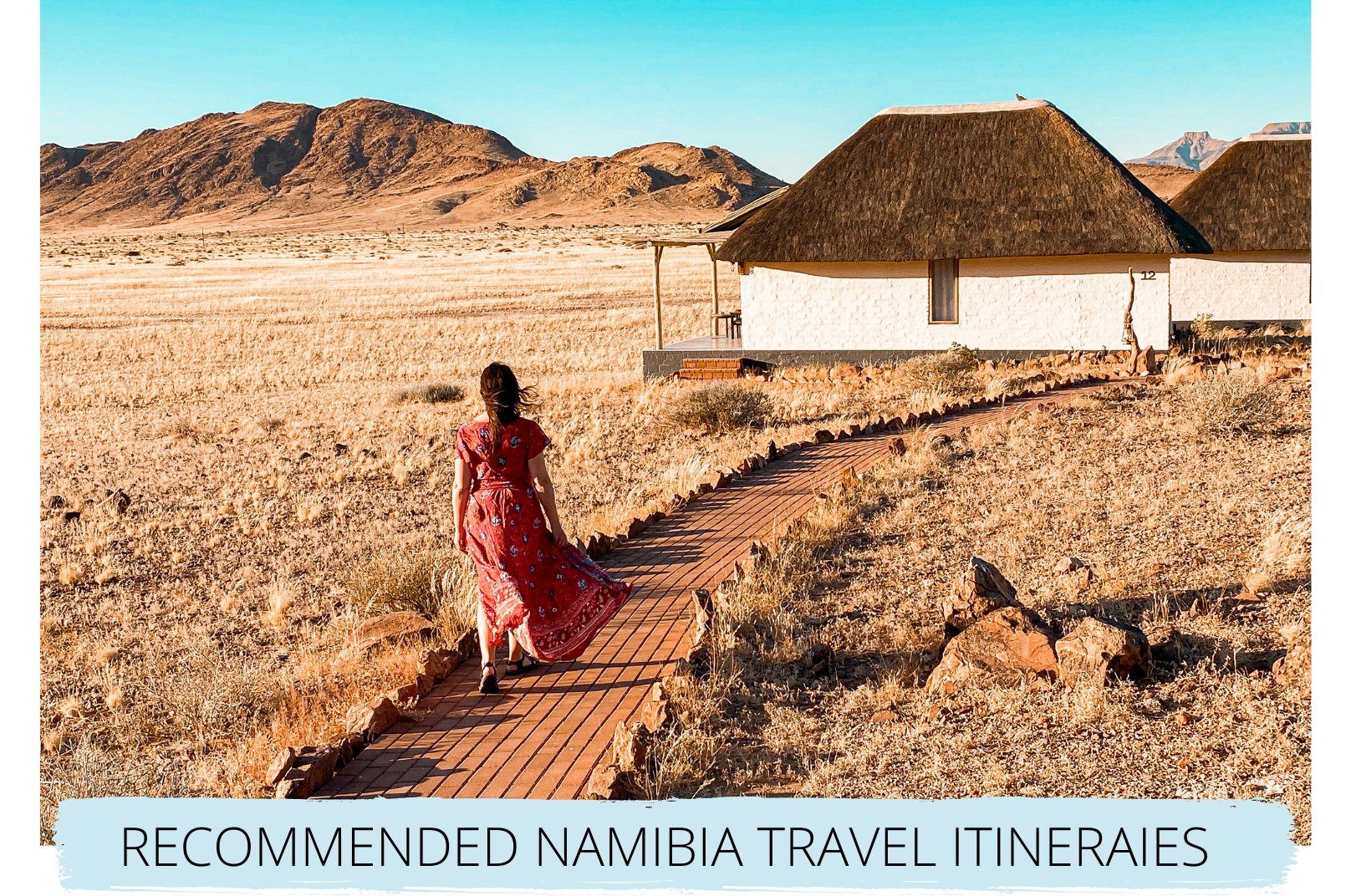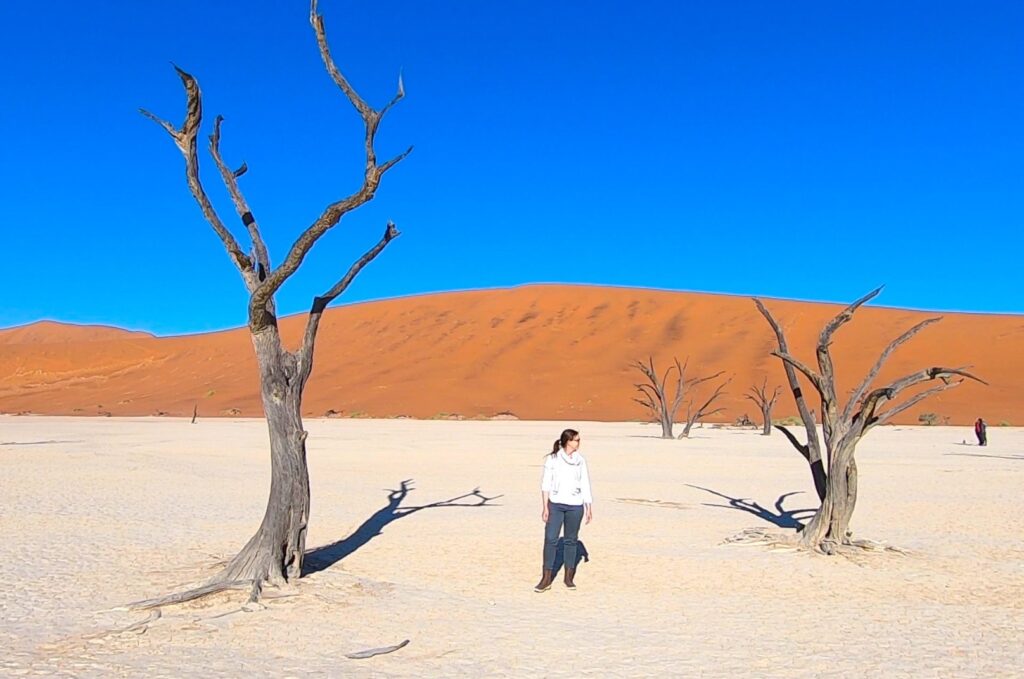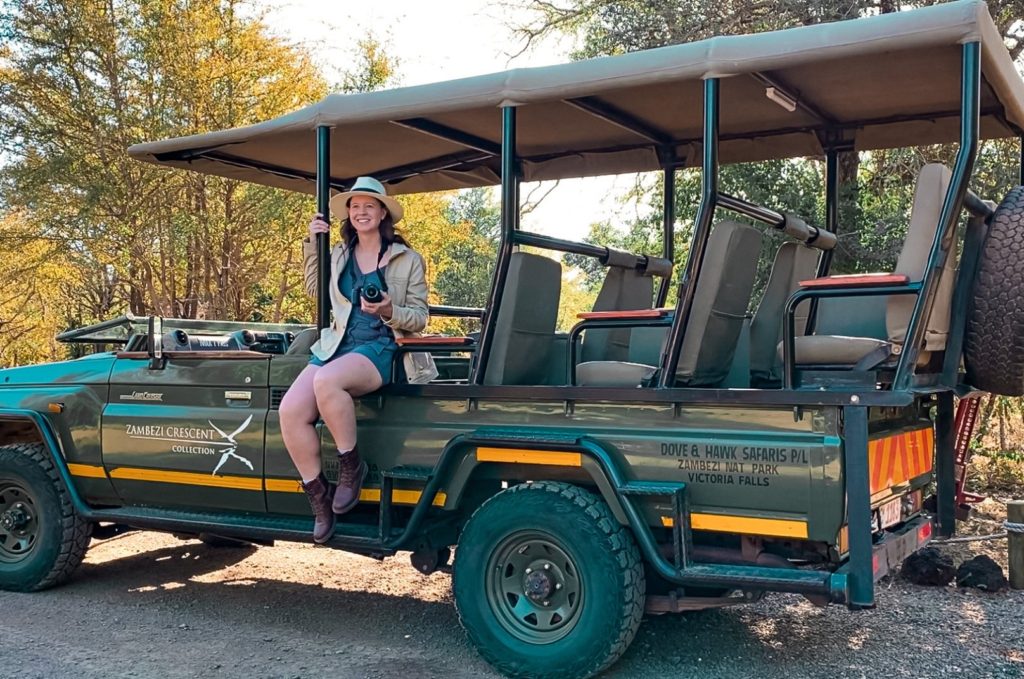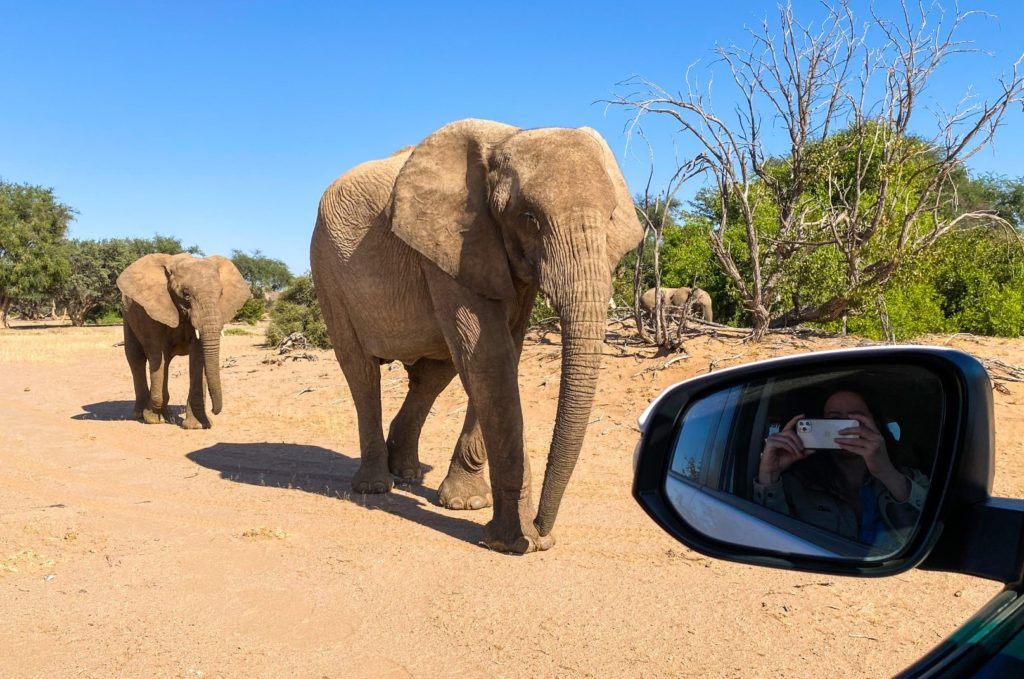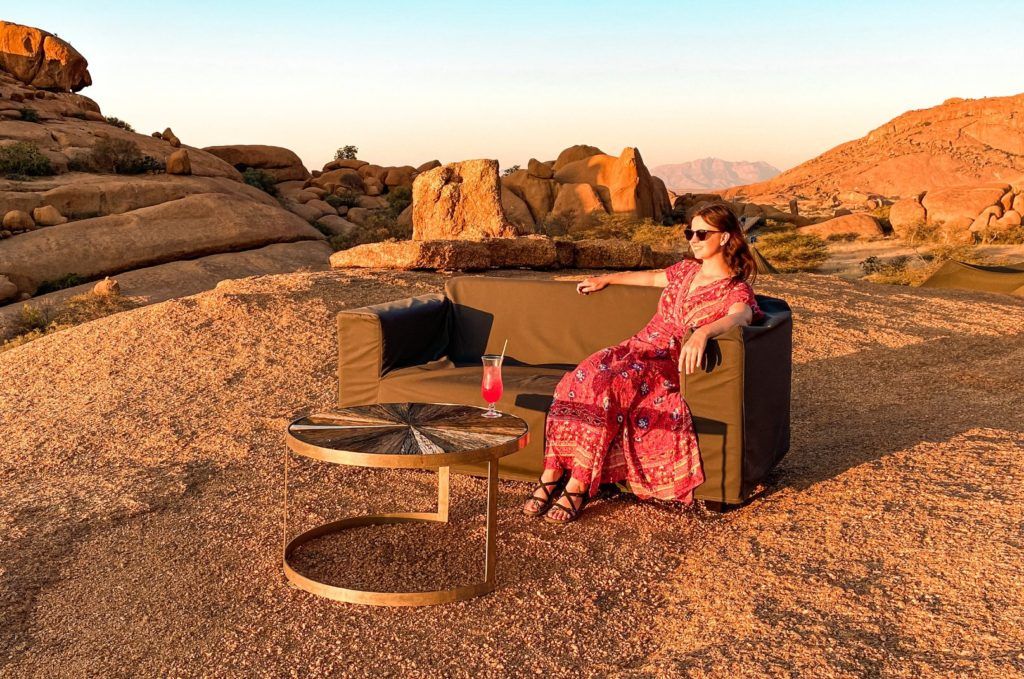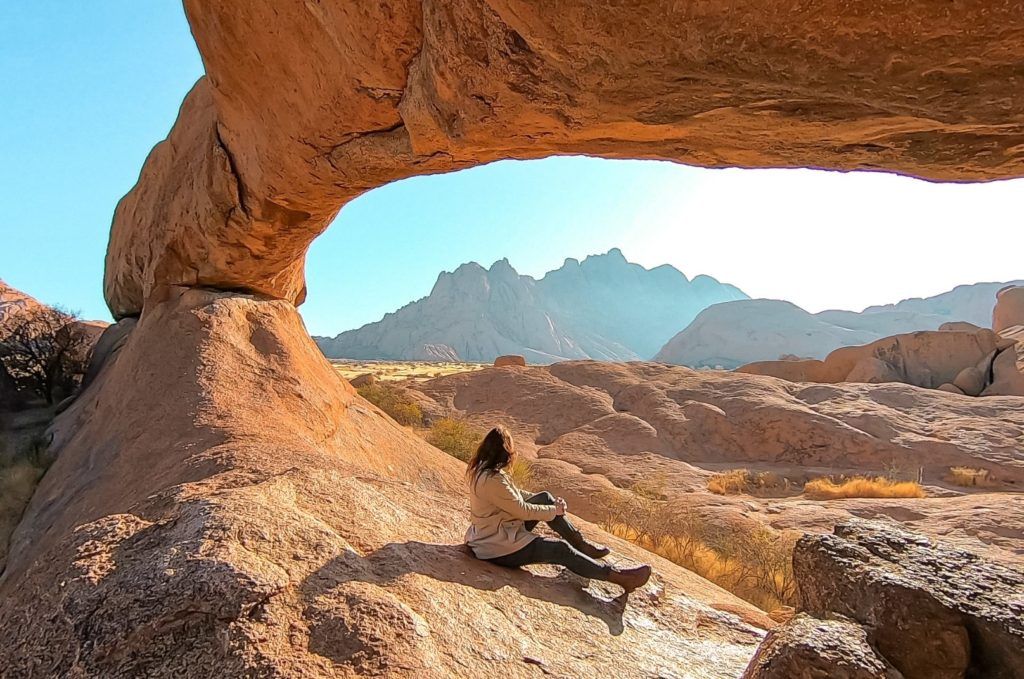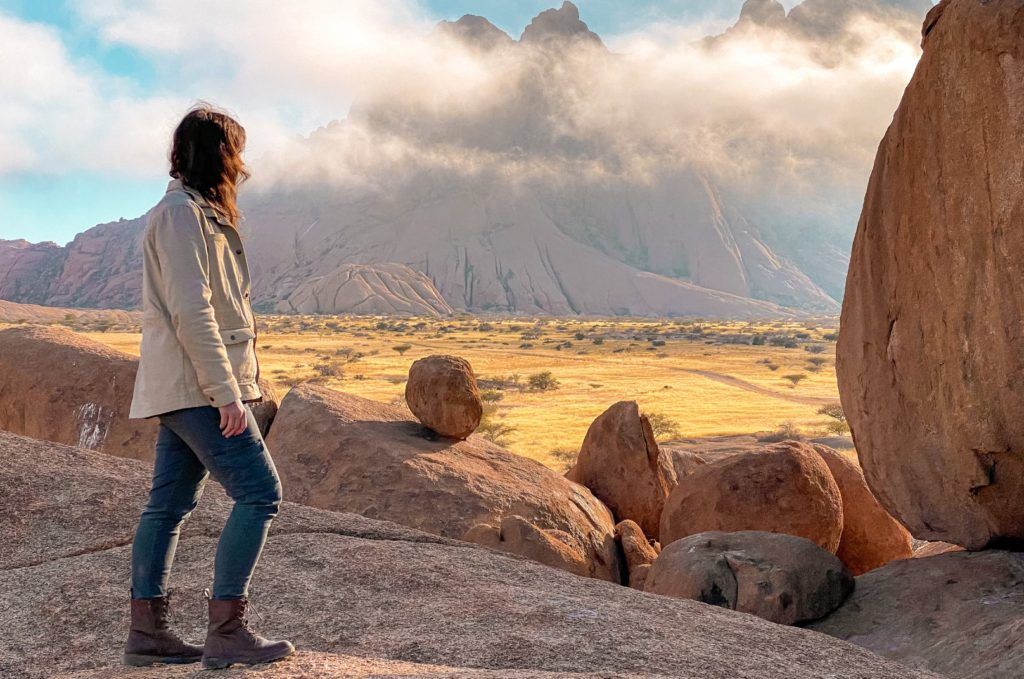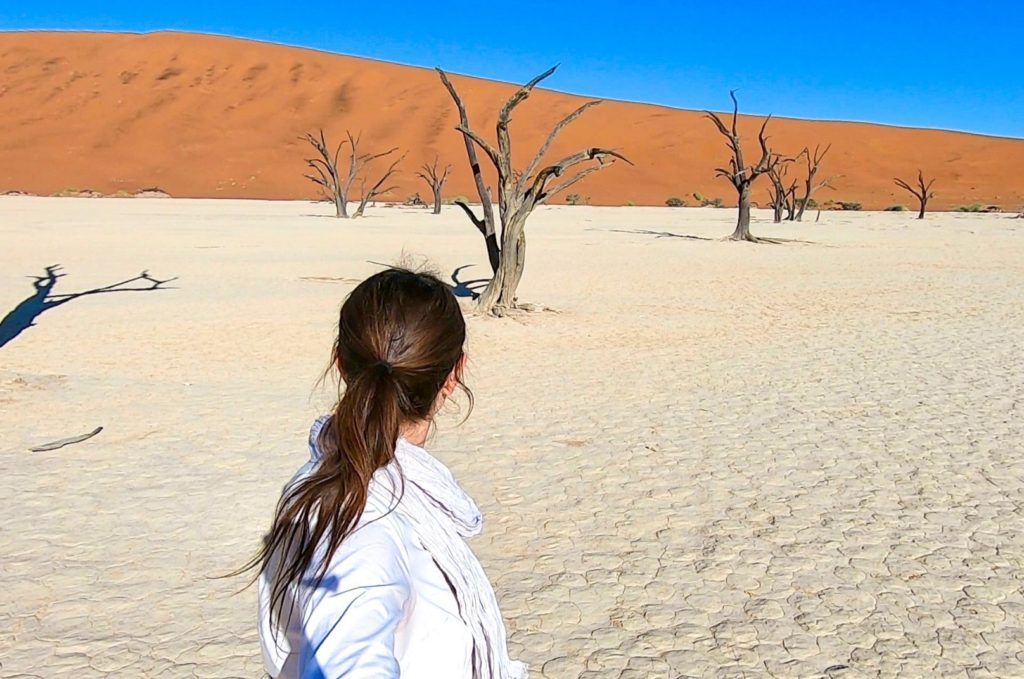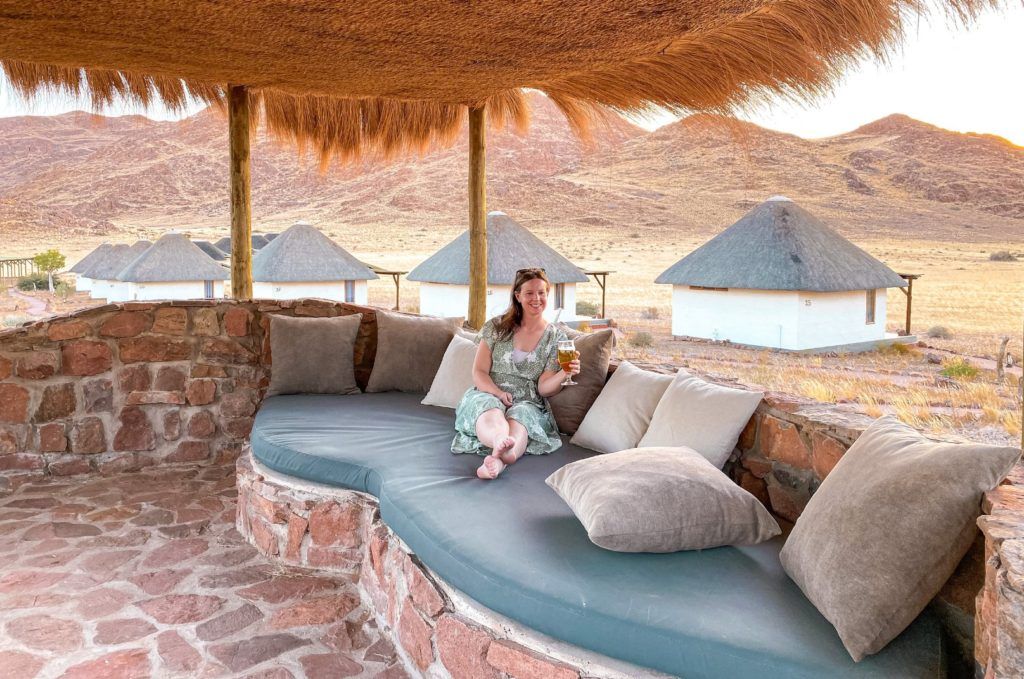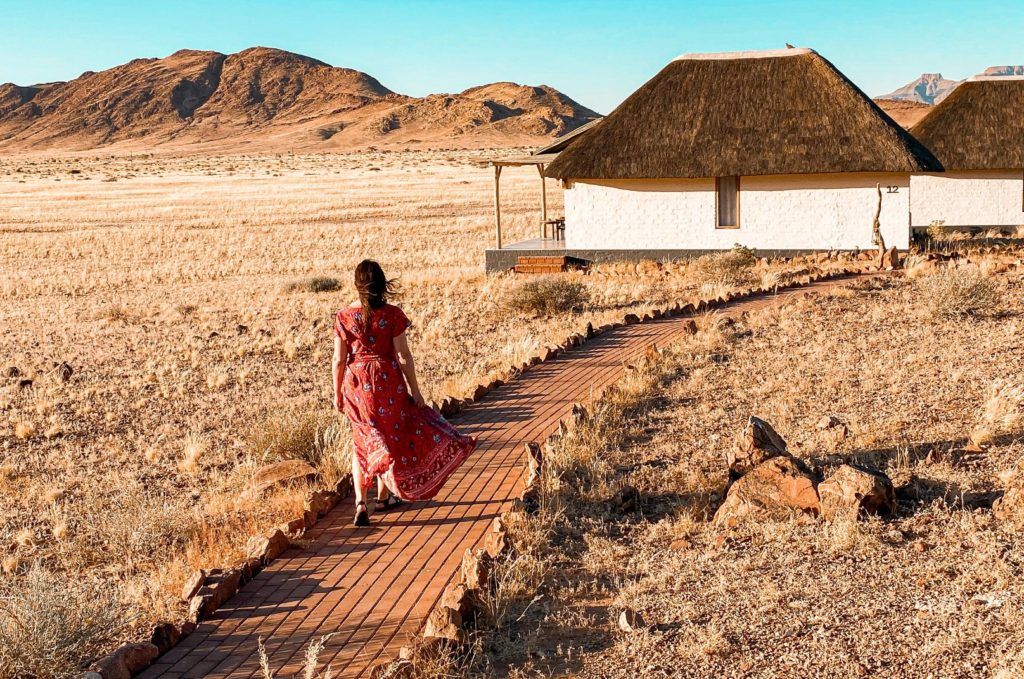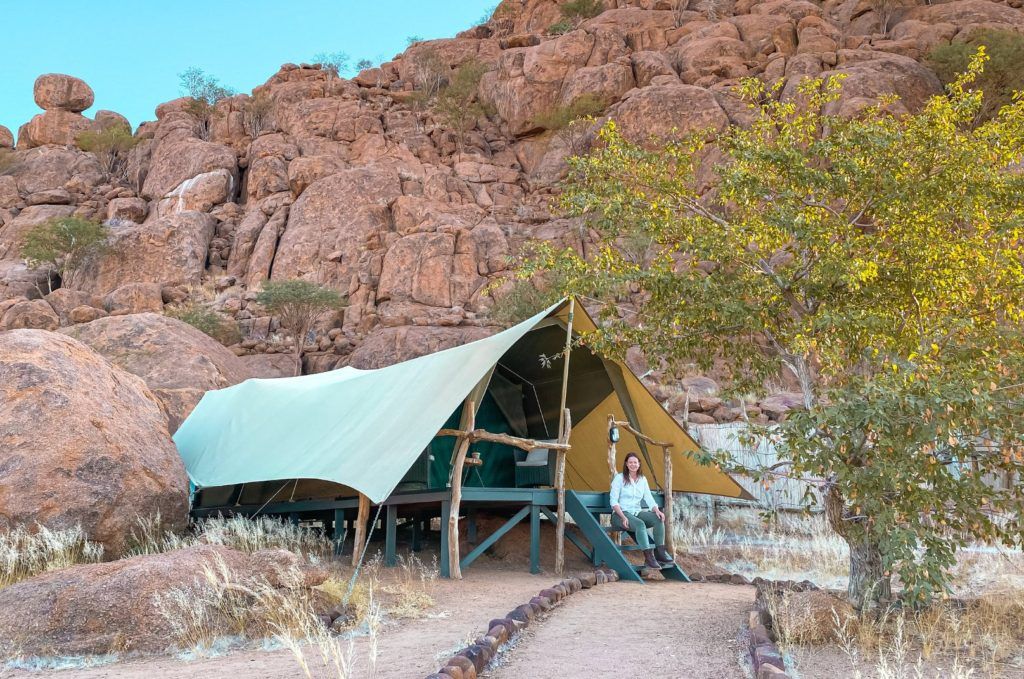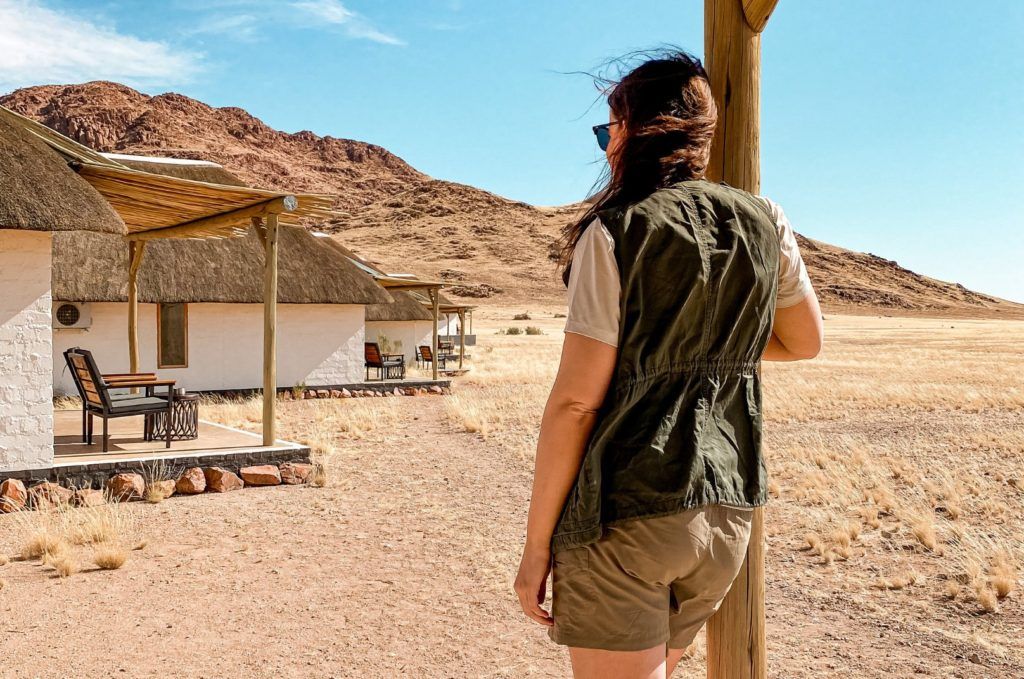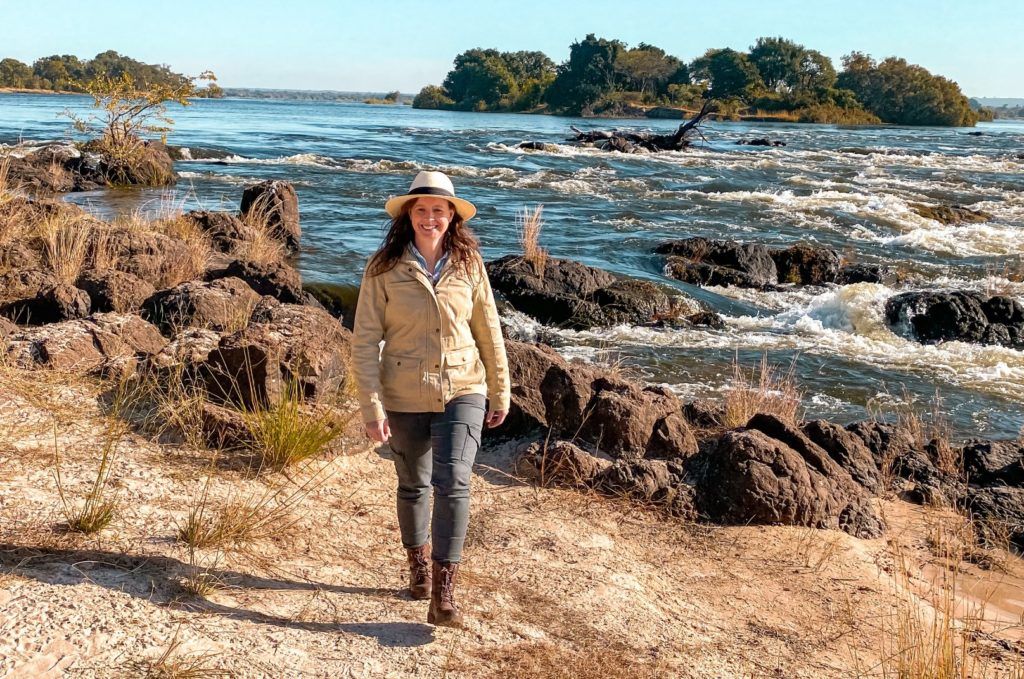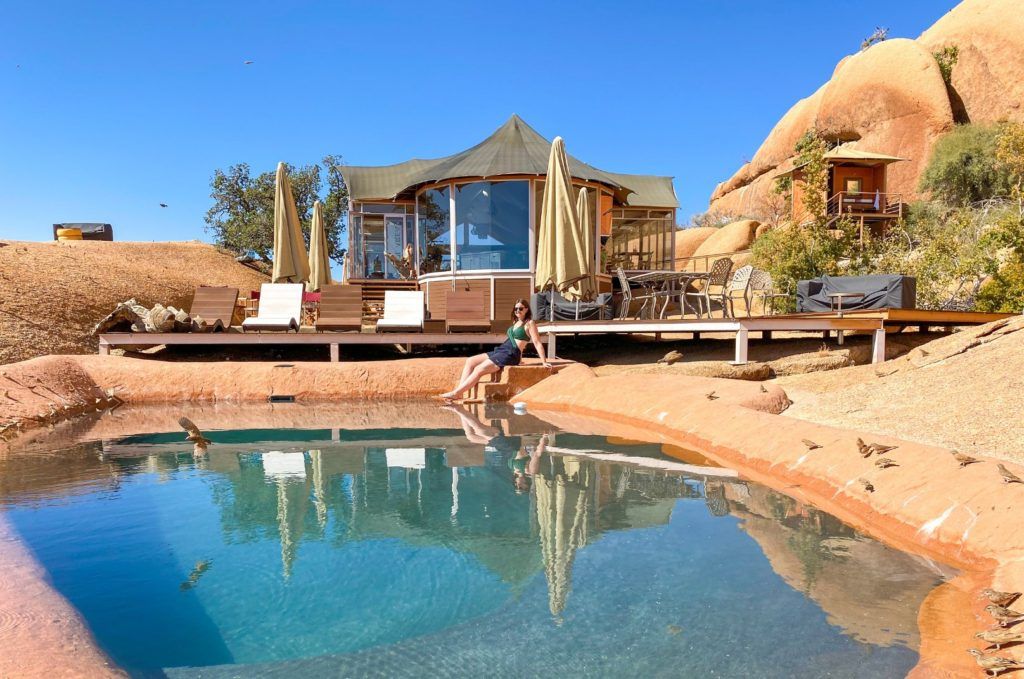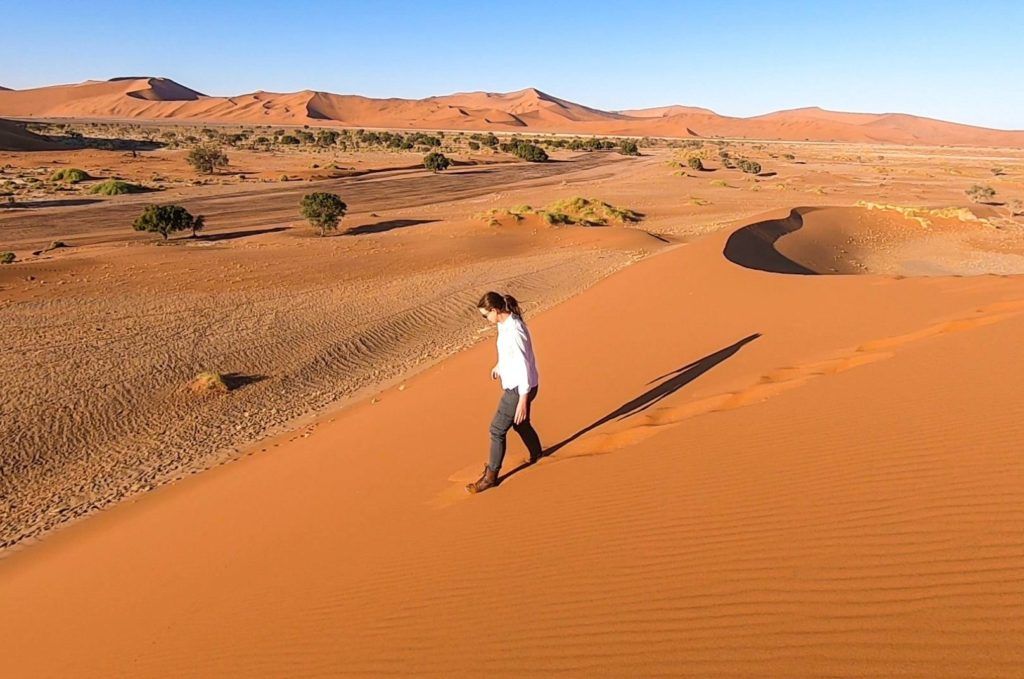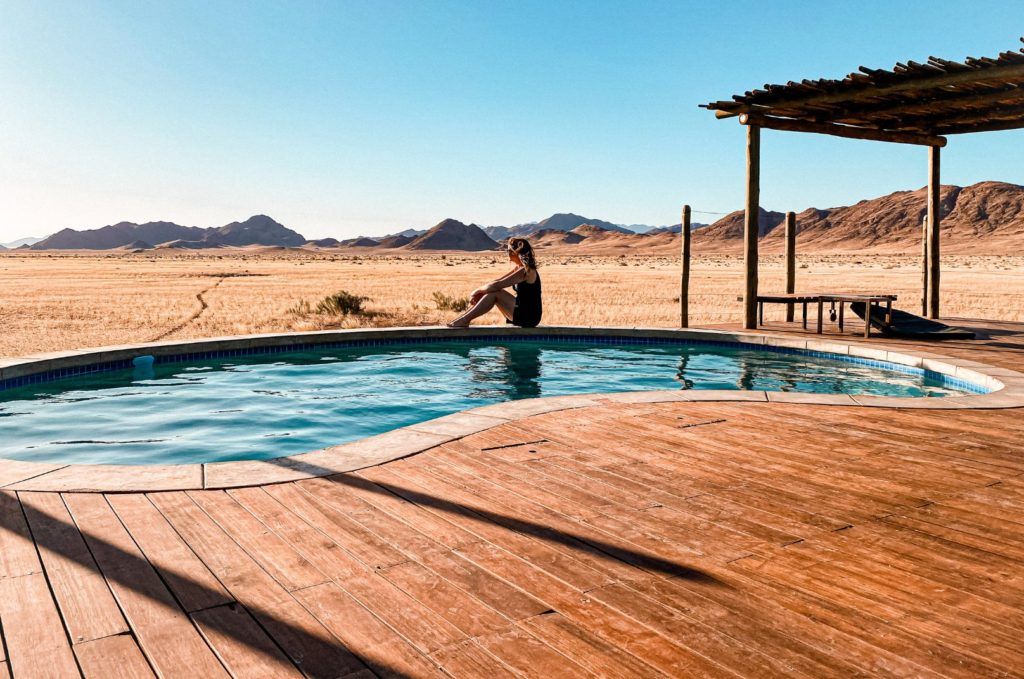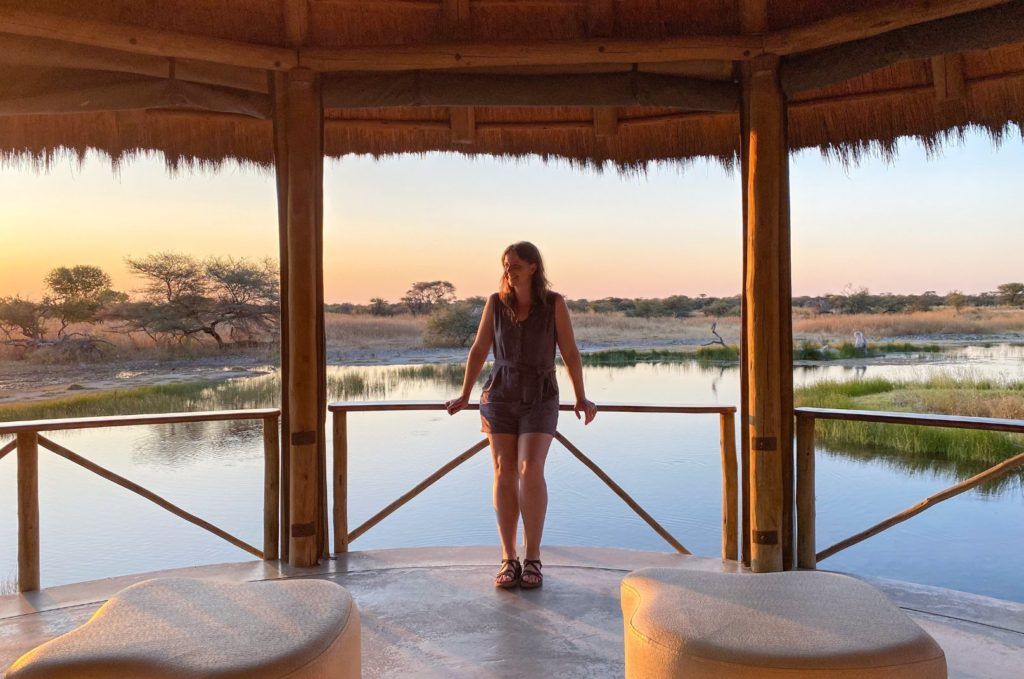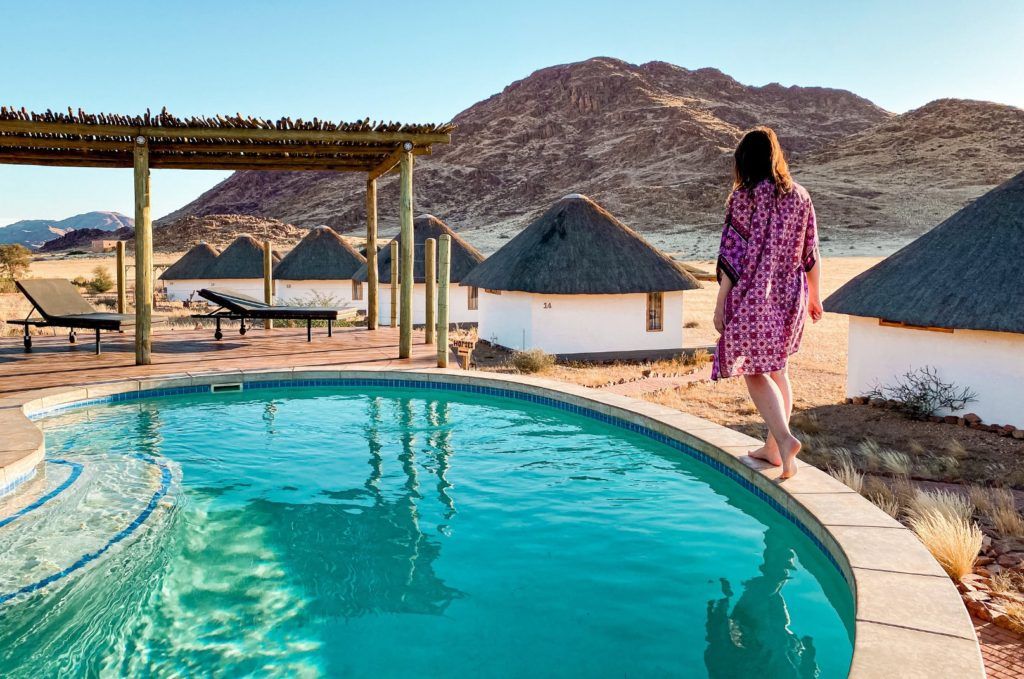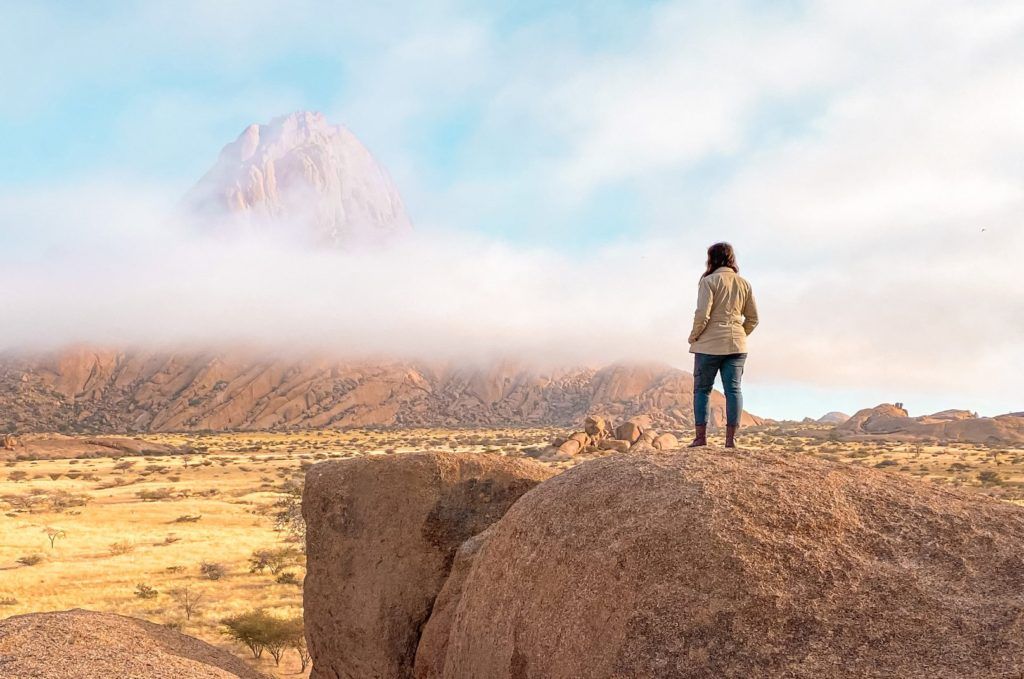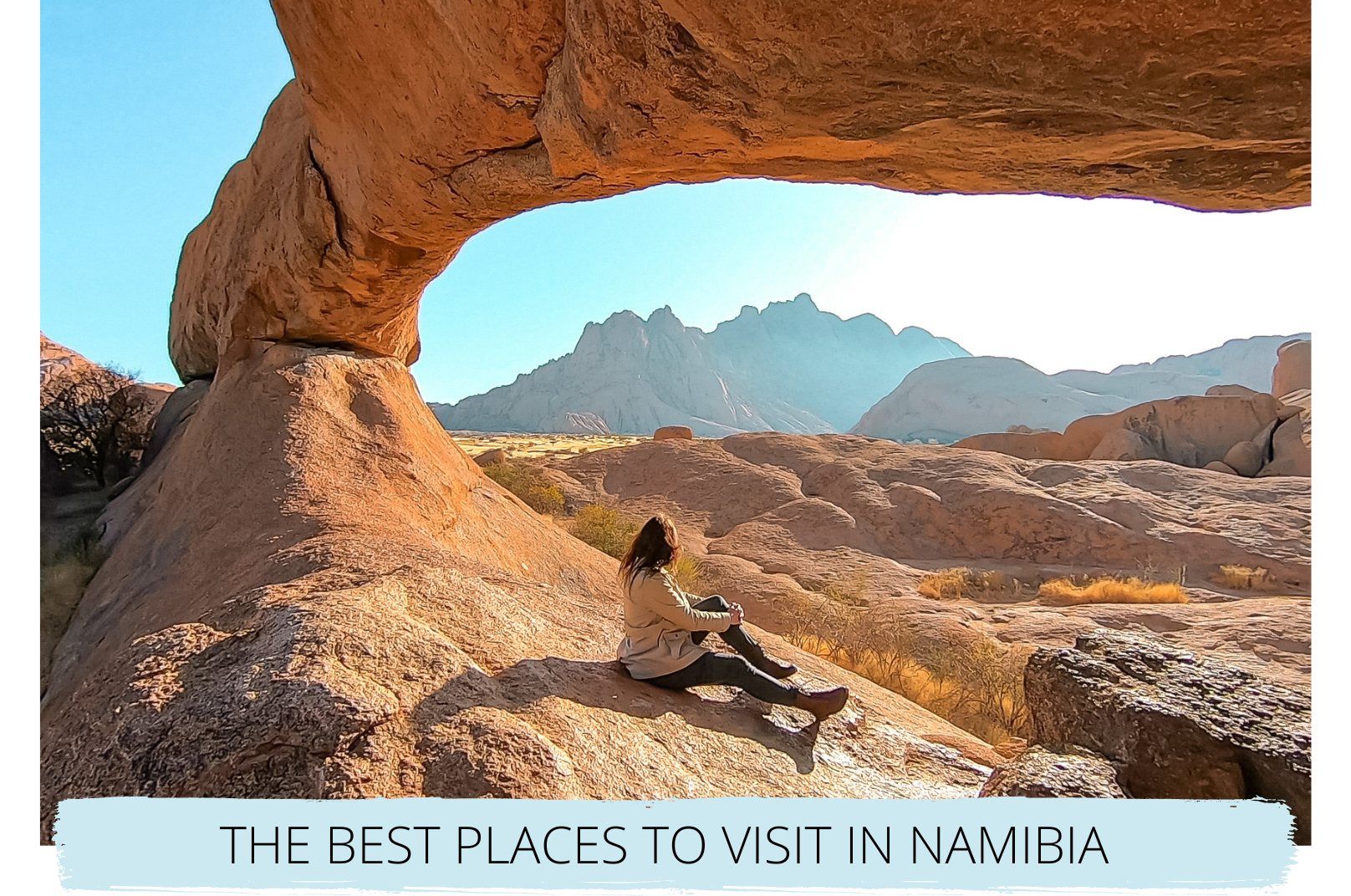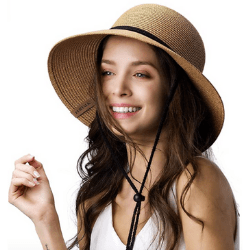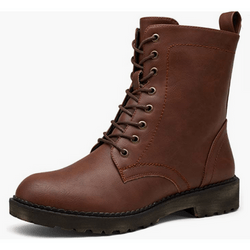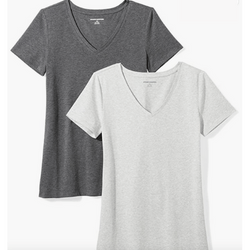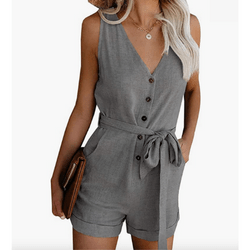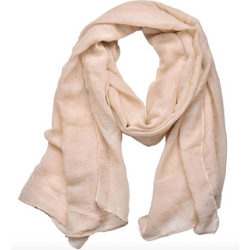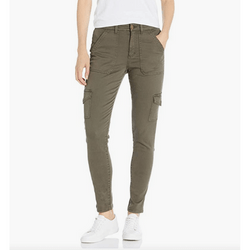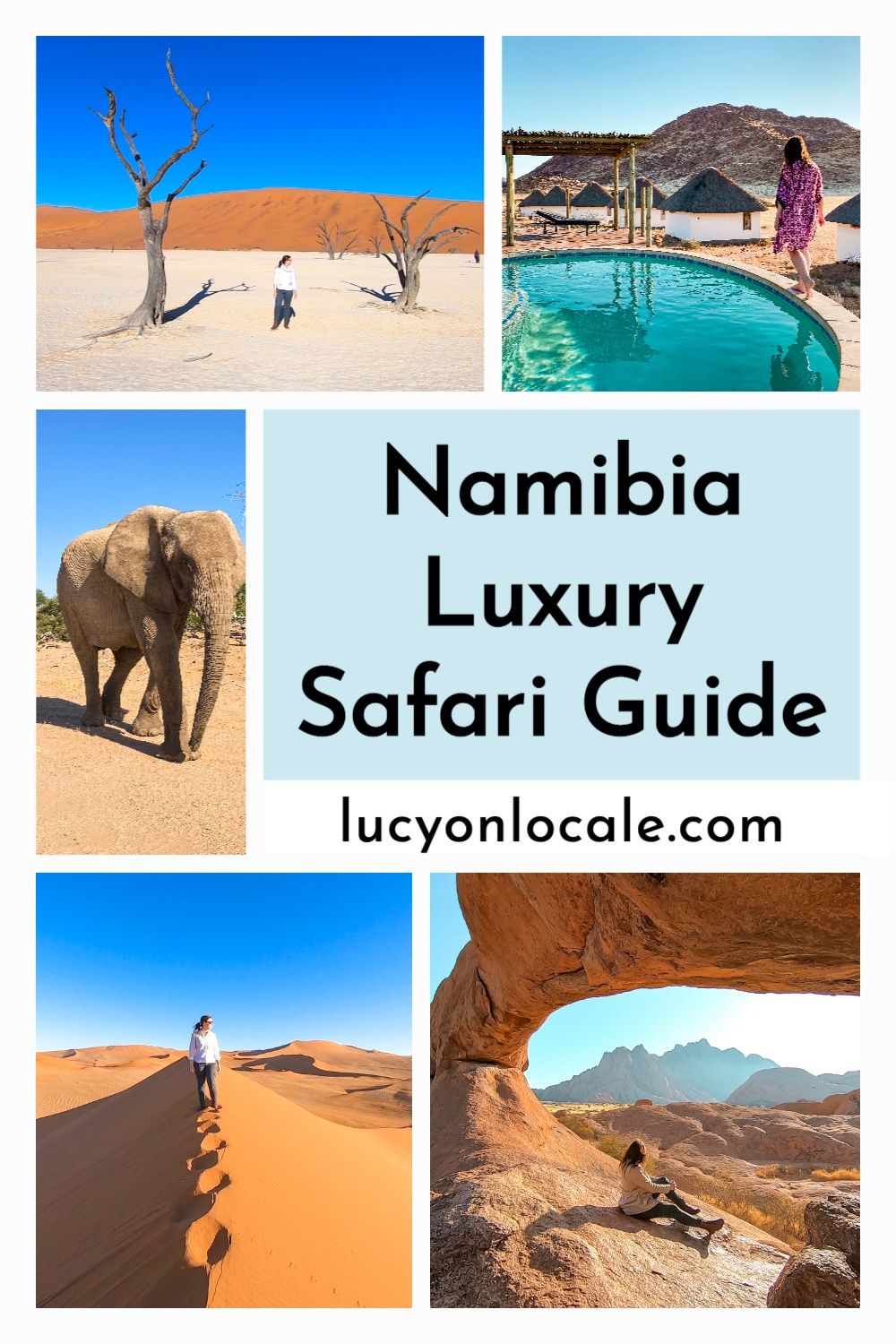Namibia is home to deserts, mountains, incredible safari lodges, national parks, dreamy beach towns, and some of the best wildlife viewing in Sub-Saharan Africa. So whether you’re climbing sand dunes in Sossusvlei or tracking rhinos in Etosha National Park, this Namibia luxury safari guide has everything you need to plan an epic trip!
Fun Fact: Namibia has one of the lowest population densities in the world, which means this is one of the best destinations to escape the crowds.
When To Go:
Namibia is a desert country – one of the driest places in Sub-Saharan Africa. July – October are the driest months of the year and the peak travel season. Wildlife will gather by the hundreds around water holes, meaning these months have some of the best game viewings anywhere in Africa. These months have the highest prices and crowds, so book your lodge and tours as far in advance as possible. In July and August, daytime temperatures average in the 60s and 70s, and nighttime temperatures can drop below freezing, so bring layers. September and October nights are warmer, but you’ll still want a jacket.
May and June are the shoulder months. The rains will have stopped, the landscape will be lush, and wildlife will be easily visible at waterholes (though not as high a concentration as in July – October). Travel costs will be less during these months, and the safari lodges and destinations won’t be overrun with tourists. Daytime temperatures range from the 60s to 80s, with nighttime temperatures falling below freezing in June, so bring layers for the mornings and evenings.
November, February, and March are the rainy and off-season months. It will be wet and humid, and wildlife will be hard to see because they won’t need to gather at watering holes. You can score some great accommodation deals during these months, though, and it can feel like you have the entire country to yourself.
December, January, and April are the best months for bird watching. These are the months directly after the rainy months, when the weather will be drier, the skies clearer, and the feeding conditions are ideal for water birds. These months have drastic temperature changes from night to day, so bring shorts, pants, short-sleeve shirts, and jackets.
 Destinations
Destinations Packing
Packing Travel Tips
Travel Tips
 Photography
Photography Points & Miles
Points & Miles Credit Cards
Credit Cards